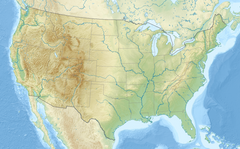Nuclear power in the United States - Wikipedia
Over-commitment and cancellations[edit]
See also: List of canceled nuclear plants in the United States
Net summer electrical generation capacity of US nuclear power plants, 1949-2011
Average capacity factor of US nuclear power plants, 1957-2011
By the mid-1970s it became clear that nuclear power would not grow nearly as quickly as once believed. Cost overruns were sometimes a factor of ten above original industry estimates, and became a major problem. For the 75 nuclear power reactors built from 1966 to 1977, cost overruns averaged 207 percent. Opposition and problems were galvanized by the Three Mile Island accident in 1979.[30]
Over-commitment to nuclear power brought about the financial collapse of the Washington Public Power Supply System, a public agency which undertook to build five large nuclear power plants in the 1970s. By 1983, cost overruns and delays, along with a slowing of electricity demand growth, led to cancellation of two WPPSS plants and a construction halt on two others. Moreover, WPPSS defaulted on $2.25 billion of municipal bonds, which is one of the largest municipal bond defaults in U.S. history. The court case that followed took nearly a decade to resolve.[31][32][33]
Eventually, more than 120 reactor orders were cancelled,[34] and the construction of new reactors ground to a halt. Al Gore has commented on the historical record and reliability of nuclear power in the United States:
Of the 253 nuclear power reactors originally ordered in the United States from 1953 to 2008, 48 percent were canceled, 11 percent were prematurely shut down, 14 percent experienced at least a one-year-or-more outage, and 27 percent are operating without having a year-plus outage. Thus, only about one fourth of those ordered, or about half of those completed, are still operating and have proved relatively reliable.[35]
Amory Lovins has also commented on the historical record of nuclear power in the United States:
Of all 132 U.S. nuclear plants built (52% of the 253 originally ordered), 21% were permanently and prematurely closed due to reliability or cost problems, while another 27% have completely failed for a year or more at least once. The surviving U.S. nuclear plants produce ~90% of their full-time full-load potential, but even they are not fully dependable. Even reliably operating nuclear plants must shut down, on average, for 39 days every 17 months for refueling and maintenance, and unexpected failures do occur too.[36]
A cover story in the February 11, 1985, issue of Forbes magazine commented on the overall management of the nuclear power program in the United States:
The failure of the U.S. nuclear power program ranks as the largest managerial disaster in business history, a disaster on a monumental scale … only the blind, or the biased, can now think that the money has been well spent. It is a defeat for the U.S. consumer and for the competitiveness of U.S. industry, for the utilities that undertook the program and for the private enterprise system that made it possible.[37]
Too many FUBARs in the nuke industry.







